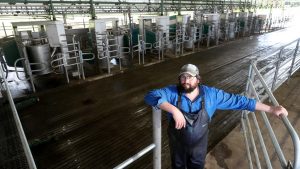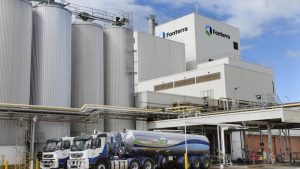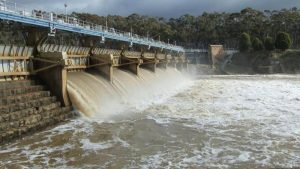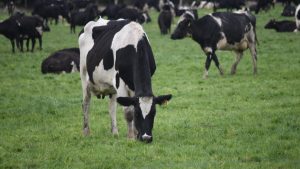
Key points:
- Milk prices could increase by between 20 to 30 cents per litre in the coming months
- Analysts say several factors are contributing to the price hike
- Farmers say more needs to be paid for their milk if families are to stay on the land
Wet conditions, increased production costs and a decline in the number of Australian dairy farmers have all contributed to the increase.
Rabobank analyst Michael Harvey says high production costs are being passed onto consumers.
“Dairy companies are looking to pass through some of the high costs that they’re seeing in their business,” Mr Harvey said.
“So, it does mean that consumers are paying a lot more for dairy across the dairy aisle.”
Mr Harvey says some of those costs include higher farmgate prices — the market value minus the selling costs — being paid to producers for their milk.
Covering costs
Bianca Woodford, who runs a dairy in the Somerset Region, west of Brisbane, says the price hike is welcome and is needed to cover increasing costs.
She hopes consumers will be understanding of the need for price increases.
“We’ve really seen a large amount of input costs increase and as a result, we feel that the milk price [rise] is definitely welcomed,” she said.
“It’s certainly just keeping with those price increases at our end to sustain our business.”
Hard times ahead
But eastAUSmilk, the peak body for dairy farmers in New South Wales and Queensland, said the sector still faced difficult times, despite the increased farmgate prices for producers.
“There is a continuing decline in the number of dairy farming enterprises, with many of the dairy farmers and their families deciding that enough was enough,” said co-chief executive officer Shaughn Morgan said.
Mr Morgan hopes even more money will be paid to producers for their milk.
“We’d like to see a higher farmgate price, it is only necessary to be able to ensure that they are able to put food on the table for their kids, and make sure that they’re able to go to school,” he said.
“In Queensland alone, there was a drop [in June] of 10.4 per cent, resulting in a year to date decrease of 3.4 per cent.”
“If the decline continues to proceed at current rates, within 10 years, it’s likely that there won’t be a Queensland dairy industry and that is of deep concern.”
Slow recovery
Analyst Michael Harvey thinks other issues such as labour shortages will hamper the industry’s recovery.
But he also highlighted positive developments, with dams full and pastures green due to recent rain.
“[It] might start to improve over the course of this this season, but it’s going to be a slow recovery,” he said.
Ms Woodford, a third-generation dairy farmer, said it is just part of being in the dairy industry.
“We’ve had two floods already this year so to bounce back from that and to now be back to where we were prior to those devastating events, we just have to continue on,” she said.
























